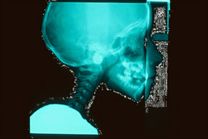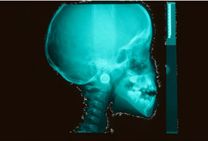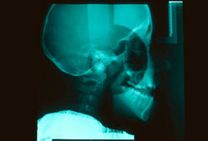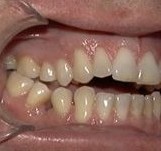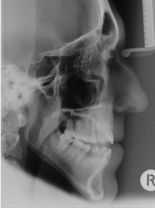Habits
There are two habits which commonly cause problems of the teeth.
Thumb or finger sucking habit
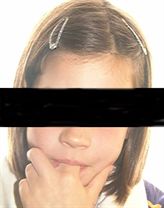
To cause any significant distortion of the teeth and/or jaw, the habit needs to be present at least 4-6 hours per day.
This type of habit is quite common in the early years. It is of no great concern while the baby teeth are in place (“primary dentition”).
However, once the permanent incisor teeth start to erupt (“early mixed dentition”), then persistent habits become of concern because of the potential to distort the teeth and the jaws.
Protrusive tongue posture
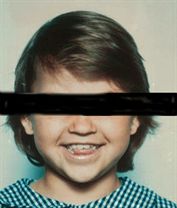
In both types of habit, the incisor teeth are blocked from erupting normally. This results in either a gap between the upper and lower incisors ( “open bite”) or less commonly, Splaying of the incisor teeth.

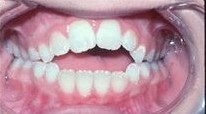
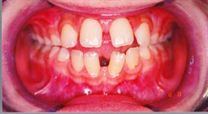
Treatment of habit-induced distortion of the teeth
Interceptive treatment
The best results are achieved where the habit is discovered early, before many permanent teeth have erupted. The aim of treatment is to stop the habit and where necessary, modify tongue posture to allow proper eruption of the permanent teeth into their correct positions. The treatment required is generally simpler and where successful, the correction is also more stable in the long term.
In the first instance, the Orthodontist would explain the situation to the patient and need to stop the habit. Hopefully, understanding the situation and where necessary a “reward for effort” type program can lead to the child stopping the habit on their own.
Generally the Orthodontist would review the situation in 6 months. If the habit is still present or tongue posture is involved, then interceptive treatment with a simple “tongue guard” type appliance maybe recommended.
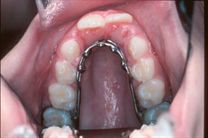
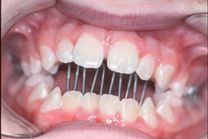
The tongue guard has two functions:
It makes the sucking habit uncomfortable, so the child stops it fairly quickly- although in very severe habits, this may take some months. It holds the tongue back, retraining its rest posture and allowing the permanent teeth to erupt without interference.
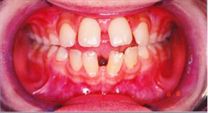
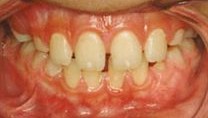
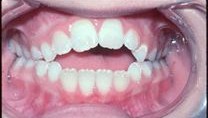
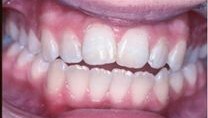
Before treatment – note position of tongue - After treatment
Before treatment – After treatment
Comprehensive treatment
There are two instances when comprehensive treatment (full braces) may be required.
- Where the problem is not picked up until the permanent dentition is fully established or
- Where there are factors other than just the habit contributing to the malocclusion e.g. crowding of the teeth or a skeletal imbalance of the jaws themselves. If there is a significant skeletal imbalance, full correction of the problem may require surgery to realign the jaws as well.
The photos to the left show an adult with an open-bite due to a skeletal imbalance.
Occlusion occurs only on the very back molar teeth as shown on the radiograph.
Correction of the bite here would need braces and surgery.
The 3 radiographs below, taken several years apart in a growing child illustrate a developing skeletal imbalance causing an open bite.
Treatment would involve full braces and surgery to the jaws once growth is complete.
